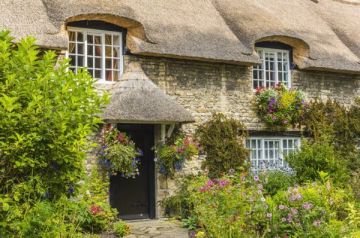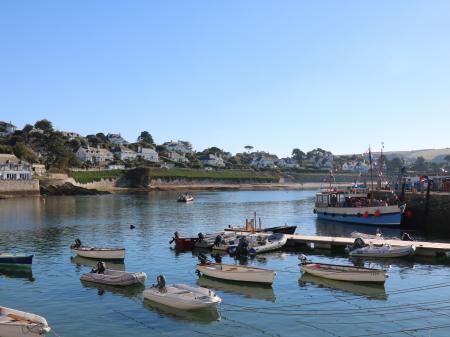Historic Cathedrals in England
Map of all Historic Cathedrals in England
The cathedrals in our gazetteer are primarily medieval. Most were intentionally built as cathedrals, though there are several that were originally monastic churches (e.g. Bath Abbey) or parish churches (e.g. Southwark Cathedral) that were later raised to cathedral status after the Reformation, as the population expanded and settlement patterns changed.
WHAT IS A CATHEDRAL?
Technically, a cathedral is the 'seat', or home church of a bishop. The term originated with the Latin word 'cathedra', which was a throne, a literal 'seat' for a bishop. Some of the original medieval 'cathedra' - stone bishop thrones - are still preserved.
CATHEDRAL TRIVIA
The honour of 'first English cathedral' is usually awarded to Canterbury Cathedral, begun in 597 AD by St Augustine. However, the first cathedral in England may actually have been built around 370 AD by the Romano-British Emperor Magnus Maximus, on Tower Hill, later site of the Tower of London. That 4th-century church was destroyed by barbarians in the 5th century, and the masonry was used to build London's city walls and the Tower of London itself.
Did you know ... The smallest cathedral - Oxford - serves the largest diocese!
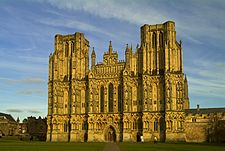
Cathedral A-Z Gazetteers
England | Scotland | Wales
Historic churches (i.e. parish churches)
England | Wales
Church architecture - visual dictionary
Cathedral plan - Most medieval churches followed a fairly similar layout. Here is a cathedral floor plan, based on Westminster Abbey.
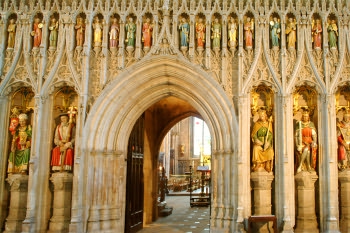
These historic gems are at the top of many visitor's list:
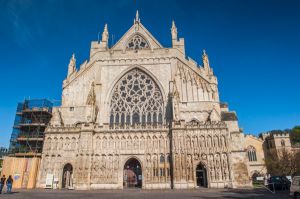
Exeter Cathedral
Exeter, Devon
The church here was begun in the 11th century, but most of what remains is the result of rebuilding between 1275-1375. The Lady chapel and retrochoir were added at this …
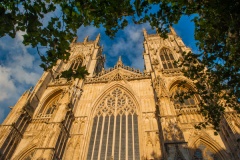
Cathedrals with unique or unusual architectural features:
- Ely - unique lantern tower
- Salisbury - highest spire (404 feet high)
- Bath Abbey - last major pre-Reformation church in England
- Gloucester - superb vaulted cloisters
- Wells - striking scissor vaulting
- Durham - the world's first structural pointed arch
CATHEDRALS
England
| Wales | Scotland
IN-DEPTH FEATURES
Westminster
Abbey | St. Paul's
HISTORY
Art & Architecture
| Gothic style |
Medieval History
| Monasteries | Parish
Churches | Anglo-Saxon
churches | The Medieval Church
